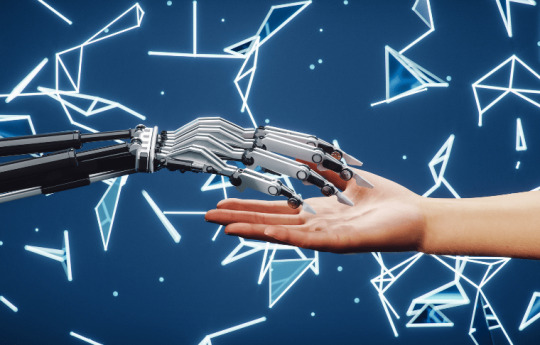#sustainable space exploration
Explore tagged Tumblr posts
Text
Breakthroughs in Space Technology: What’s on the Horizon?
Introduction
Space technology has always captured our imagination, pushing the boundaries of what is possible. As we venture further into the cosmos, remarkable breakthroughs are paving the way for new discoveries and advancements. In this article, TechtoIO delves into the exciting world of space technology, highlighting the latest innovations and what’s on the horizon for space exploration. Read to continue link
#Innovation Insights#Tagsadvanced propulsion systems#AI in space#colonizing other planets#commercial spaceflight#future of space technology#interstellar exploration#Mars missions#miniaturized satellites#moon missions#private space companies#radiation protection in space#reusable rockets#space debris solutions#space exploration#space technology#space technology breakthroughs#space tourism#space-based solar power#sustainable space exploration#Trends#Nvidia Drive#Analysis#Tech news#Science updates#Digital advancements#Tech trends#Science breakthroughs#Data analysis#Artificial intelligence
1 note
·
View note
Text
The pursuit of sustainability in space exploration is a collective journey that requires the collaboration of nations, institutions, and industries across the globe. Cislunar space designates the area that lies between the Earth and the Moon.
Cislunar infrastructure and space exploration have the potential to go beyond their immediate objectives and inspire eco-consciousness on Earth.
By promoting technological innovation, global collaboration, and environmental awareness, space missions can contribute to fostering a more sustainable and environmentally conscious future for our planet.
#Cislunar Infrastructure Market#Cislunar Infrastructure Market Size#Cislunar Infrastructure Market Trends#Sustainable Space Exploration#Aerospace#BISResearch
0 notes
Text
i feel like re: jonathan's camera, steve's reaction is way more focused on than jonathan's LITERAL CRIMES. like yes stevetommycarol like graffitied the movie theater and broke his camera, but jonathan... took illicit pictures of an underage couple THROUGH STEVE'S WINDOW. how would you feel? how would you react?
and jonathan never really faces any lasting consequences? he gets a new camera from steve. he eventually ends up with nancy. and nobody really finds out or punishes him for being a .... literal criminal....
meanwhile, steve reacting to it is treated like some huge thing bc he calls jonathan queer ?? like i get that it may be a little harder hitting considering the audience is (i think? i only know from the tumblr sample size) seems mostly queer, but context please. not excusing it, but it's the 80s during the height of the aids epidemic saur. and it's also easy to say things you don't necessarily mean in the heat of the moment. but guess what. he apologized. did jonathan?
other than that, name one thing that could actually categorize steve as someone who is Decidedly an Asshole. talking shit with his friends is such a non problem (do u not shit talk with ur friends...) and being popular doesn't mean shit unless there's evidence.
stop trying to give steve a redemption arc when he never needed ur absolution
#steve harrington#it's irritating to me#like this is primarily in the steddie space and it's genuinely made me not want to consume content#why does he have to change and explore other peoples' interests when nobody cares to do the same for him#he's constantly apologizing in fic and i hate it#tell me what he's apologizing for#tell me where he's a bully#fanon has completely twisted his character to the point where he's just completely malleable#i'm not saying fanon is wrong bc i understand projecting and adding little things to the character to make it more appealing to urself#and i definitely do that sometimes but I REALIZE IT#im not trying to claim that steve is xyz without thinking critically about it#having him put sm effort in when nobody else puts effort into him... it's exhausting#if ur gonna do that then paint it in a realistic way bc how long could anyone keep doing that#how sustainable is it to keep apologizing and hiding ur interests all of the time#it irks me
22 notes
·
View notes
Text

#aiart#space exploration#art#recycled materials#ai#digitalart#environmental sustainability#innovation#creativity#science fiction#spaceship
2 notes
·
View notes
Text
BREAKING: SpaceX Nails Another Booster Landing! (Second Successful Catch!)
SpaceX has done it again! Watch the incredible footage of their second successful booster landing and catch. This groundbreaking achievement marks another milestone in reusable rocket technology.
youtube
#SpaceX#Rocket Landing#Booster Landing#Space#Technology#Innovation#Space Exploration#Engineering#Precision#Reusable Rocket#Cost Effective#Sustainability#Youtube
0 notes
Link
Forget everything you thought you knew about silver. It’s not just about jewelry or coins anymore. It’s becoming crucial in the world of spacecraft recycling, playing a big role in sustainable space missions. Who knew silver could be a space hero? What other metals are you into that have unexpected uses? Dive into the world of silver and beyond at www.SilverWars.com.
#silver#spacecraft recycling#sustainable space missions#metals#space technology#recycling#silver uses#unexpected uses of metals#space industry#eco-friendly materials#metallurgy#silver hero#green technology#innovation#space exploration#metal recycling#materials science#sustainability#NASA#spacecraft#jewelry#coins#silver mining#future technology#environmental impact#metal applications
0 notes
Text
#AI Applications#Artificial Intelligence in Space#facts#Helium-3#Kessler Syndrome#life#Lunar Economy#Mars Exploration#Moon Mining#Orbital Debris#Podcast#Private Space Companies#Rare Earth Metals#Satellite Technology#serious#Space Ethics#Space Exploration#Space Innovations#Space Policy#Space Sustainability#Space Tourism#truth#upfront#website
0 notes
Text
Lockheed Martin Unveils Water-Based Lunar Architecture for Future Moon Missions
Lockheed Martin's new lunar architecture focuses on sustainability and resource utilization for future Moon missions.
Lockheed Martin has unveiled its vision for a sustainable lunar presence with its water-based lunar architecture, which aims to revolutionize how humanity approaches space exploration. The architecture is designed to support long-term missions on the Moon, focusing on utilizing water as a key resource for both human habitation and operational needs. This new approach is part of the broader…
#Artemis program#Astro News#human missions to the Moon#Lockheed Martin#lunar architecture#lunar exploration#lunar water resources#Moon habitation#science#space exploration#sustainable Moon missions#Trending News#water-based infrastructure
0 notes
Text
NASA Artemis Accords Signatories Progress on Sustainable Exploration
A record number of Artemis Accords signatories, including the United States, gathered at the International Astronautical Congress (IAC), the world’s largest global space conference taking place in Milan this week, furthering discussions on the safe and responsible use of space for the benefit of all. During the space conference, top space agency leaders and other […] from NASA https://ift.tt/4drHU6i
0 notes
Text
I would like to be more informed about
I would like to be more informed about several topics, particularly in the fields of computers, general awareness of global events, and science. In computers, I am interested in learning more about emerging technologies like artificial intelligence, cybersecurity, and blockchain, as well as advancements in software development and programming languages. For general awareness, I want to stay…
#Artificial intelligence#Biotechnology#Current Events#Cybersecurity#dailyprompt#dailyprompt-2066#Emerging Technologies#Geopolitical Developments#Global Awareness#Programming Languages#Space Exploration#Sustainable Energy
0 notes
Text
The Role of K.Ramakrishnan College of Technology in paving the future of Engineering
https://krct.ac.in/blog/2024/06/25/the-role-of-k-ramakrishnan-college-of-technology-in-paving-the-future-of-engineering/

Engineering is often described as the art of applied science. It has always been at the forefront of shaping human civilization. From the construction of ancient marvels like the pyramids to the modern wonders of skyscrapers and space exploration; engineers have continually pushed the boundaries of what is possible. Now, as we stand on the brink of a new era defined by rapid technological advancement, what does the future hold for this noble profession? At K.Ramakrishnan College of Technology (KRCT), we are committed to exploring and shaping that future of Engineering.
Paving the future of Engineering at KRCT
Rise of Artificial Intelligence and Automation

One of the most significant trends in engineering is the integration of artificial intelligence (AI) and automation into various processes. AI-driven algorithms are revolutionizing industries such as manufacturing, transportation, healthcare, and finance. In future of Engineering, Engineers are developing smart systems capable of autonomous decision-making, leading to increased efficiency, accuracy, and safety across sectors. From self-driving cars to robotic surgery, the future of engineering is undeniably intertwined with AI and automation.
At KRCT, our AI program is at the cutting edge of this transformation. Our students and faculty pioneer research and projects that develop smart systems and autonomous technologies. Our state-of-the-art laboratories and industry collaborations ensure that we equip our graduates to lead the charge in this AI-driven future.
Sustainable Solutions for a Changing World

With growing concerns about climate change and environmental degradation, engineers are spearheading efforts to develop sustainable solutions. Renewable energy technologies, such as solar, wind, and hydroelectric power, are becoming more efficient and cost-effective. Further, they pave the way for a transition to a greener economy.
Additionally, advancements in materials science are enabling the creation of eco-friendly alternatives to traditional construction materials and reducing the environmental impact of infrastructure projects.
KRCT’s commitment to sustainability is evident in our curriculum and research initiatives. Our Engineering departments focus on innovative solutions that address ecological challenges. From developing renewable energy systems to creating sustainable urban infrastructure, our students and faculty dedicate themselves to making a positive impact on the environment.
Interdisciplinary Collaboration and Innovation
In the future, engineering will increasingly rely on interdisciplinary collaboration to tackle complex challenges. The boundaries between different branches of engineering, as well as with other fields such as biology, medicine, and computer science, will continue to blur. This convergence of disciplines will lead to the emergence of novel technologies and solutions that address societal needs in innovative ways. Engineers will need to adapt to this changing landscape by increasing their creativity and teamwork.
In addition, KRCT promotes an interdisciplinary approach to education and research. Thus, our collaborative projects often involve students and faculty from multiple departments working together to solve real-world problems. Moreover, by encouraging cross-disciplinary teamwork, we prepare our students to think creatively and work effectively in diverse teams.
Space Exploration and Colonization
As humanity looks towards the stars, engineering will play a crucial role in the exploration and colonization of space. Also, advances in rocket propulsion, materials science, and robotics are making space travel more accessible and sustainable. However, Private companies like SpaceX and Blue Origin are driving innovation in the space industry, with ambitious plans to establish colonies on the Moon and Mars. Engineers are working on designing habitats, life support systems, and transportation infrastructure that will enable long-term human presence beyond Earth.
Challenges and Opportunities Ahead

Despite the incredible progress being made, engineering faces numerous challenges in the coming years. Engineers must carefully direct ethical considerations surrounding AI, automation, and genetic engineering to ensure that technological advancements benefit society as a whole. Additionally, the global shortage of skilled engineers poses a significant obstacle to meeting the growing demand for talent in key sectors. However, with challenges there are always new opportunities for innovation and growth. By implementing new technologies, and prioritizing sustainability, engineers can shape a future that is technologically advanced and also equitable and environmentally sustainable.
At KRCT, we are dedicated to addressing these challenges through our comprehensive educational programs and ethical focus. We instil in our students not only the technical skills but also the moral responsibility to use their knowledge for the greater good. By nurturing a culture of innovation and ethical practice, we aim to graduate engineers who are ready to lead and inspire in an ever-evolving world.
To Conclude
The future of engineering is bright and full of potential. At K.Ramakrishnan College of Technology, we are proud to be at the forefront of this exciting journey. By integrating AI and automation, promoting sustainability, encouraging interdisciplinary collaboration, we are preparing our students to be the innovators and leaders of tomorrow. Join us at KRCT and be a part of engineering the future of our world.
Dr. N. Vasudevan, Principal
Tags:
Artificial Intelligence and Automationbest ai and engineering placement college in tamilnadubest engineering college with lowest feesbest hostal facilily and campusfuture job opportunities for aifuture opportunities for engineeringkrct college of technologythe best autonomus college in tamilnaduthe best college for ECEThe Role of K.Ramakrishnan College of Technology in paving the future of Engineeringwhat are scope available at future for engineerswhat are the advantages of aiwhat are the job opportunities for ai and automation engineeringwhat are the main role of ai futureWhat are the scope for engineering in futurewhich is best college to study ai and other engineering in ta
#top college of technology in trichy#krct the best college of technology in trichy#best college of technology in trichy#best autonomous college of technology in trichy#admission#The Role of K.Ramakrishnan College of Technology in paving the future of Engineering#Paving the future of Engineering at KRCT#Rise of Artificial Intelligence and Automation#Sustainable Solutions for a Changing World#solor panel#Space Exploration and Colonization#Challenges and Opportunities
0 notes
Text
Celebrating National Aviation Day: A Tribute to Flight and Innovation
Celebrate National Aviation Day on August 19 by honoring the achievements of aviation. From the Wright brothers' first flight to modern innovations, explore the impact and future of this transformative industry.
Introduction National Aviation Day on August 19 celebrates the wonders of flight and honors the pioneering spirit of aviation. From the Wright brothers’ first flight to modern advancements, this day highlights the incredible achievements in aviation and the ongoing quest for innovation in the skies. The Legacy of National Aviation Day National Aviation Day is a day to recognize and celebrate…
#air shows#aviation history#aviation museums#flight innovations#jet age#modern aviation#National Aviation Day#space exploration#sustainable aviation#Wright brothers
0 notes
Text

#habitat#mars#art#space exploration#eco-friendly#colonization#digitalart#ai#aiart#self-sustaining#future
1 note
·
View note
Text


linktr.ee/Teslaownerssv
#tesla#elon musk#cybertruck#astronaut#astrophysics#space travel#spacex#space exploration#electric transport#ecology#sustainable energy#sustainable transport#san obispo#california#teslaowners
0 notes
Text
The Future World and Humanity

In the way the world is progressing in the fields of science and technology, what will be the implications for humanity and this planet? Let's try to understand this. Firstly, we need to assess the changes happening on this planet. In the next hundred years, there will be a significant increase in the average temperature of the Earth and a rise in sea levels, in addition to changes in weather patterns. Coping with this changing environment will require dealing with severe shortages of human and animal deaths and food. The elimination of insects will affect all creatures, ultimately impacting human life, and the chain of human deaths will accelerate after a century.
According to research estimates, by 2050, the rising sea levels will cause many cities and islands near the sea to disappear from the Earth. The advent of robotic machines will result in the elimination of 50% of jobs, with every task being performed in a smart and autonomous manner.
Both robotics and technology will transform the nature of all industries, and there will be further advancements in drone flights, whether for civilian or military use, making human life easier. Human society will undergo a transformed society. Many languages spoken on Earth will become extinct and obsolete. Due to the advancement of technology, there will be an impact on human evolution, leading to changes in its structure. According to scientists' estimates, human race extinction will occur within a thousand years.
By 2025, according to a research estimate, there will be a 1.5% increase in the Earth's temperature compared to the pre-industrial era, and this will continue to rise unless addressed. The environment of 2050 will be very different from today's environment, with changes in education, income sources, and human living conditions. Due to scientific progress, means of income in the 21st century will be faster and more effective. Human means of income will be through rockets, providing better facilities for humans in space and becoming their new habitat. The dreams of the present era will become a reality in the next century.
Due to the advancement of scientific progress in medicine, there will be an impact on human health and lifespan, and diseases like cancer will become treatable. Patients will be able to receive treatment from doctors without leaving their homes, thanks to technology. The speed of computers will be many times faster than today's computers. With the advent of 3D printing technology, anything can be easily manufactured and molded according to its construction. Interactive holographic television will adorn homes by 2050, which can be activated with the press of a button on mobile phones, allowing for viewing 3D and virtual films.
In the current era, some jobs provide convenience with all information displayed in front of the driver's screen. In this era, students will no longer be seen carrying large bags for education; instead, they will carry tablets and laptops. All the syllabi of students will be available on them, freeing them from carrying heavy books. Touchscreens will replace blackboards, allowing teachers to create shapes easily. Future humans will strive to improve their defensive, mental, and physical abilities through technology, which will reduce the use of natural factors.
There are some positive developments in this human advancement, including the creation of new antibiotics and vaccines, and the establishment of democratic societies. However, when looked at negatively, a new era of nuclear weapons and fascism is also emerging. Environmental and societal changes indicate a fear of overcrowding by 2050, according to an estimate by the World Bank. Human evolution will continue as long as they continue to advance their race and protect it. Human evolution is affecting the current environment in three ways:
Increase in population rate,
Environmental changes, including smoke from burning petroleum products obtained from land and seas, and
Melting glaciers.
This is leading to deforestation, poor air quality, and the scarcity of clean drinking water. Human progress is showing its impact on the environment, such as changes in land construction, plant species, and the carbon cycle. Due to the increasing population and construction of buildings, there will be a shortage of agricultural land, affecting food shortages. Forests will start disappearing from the page of existence. According to scientists, this environmental change will lead to changes in human evolution and its structure.
Visible changes in humans, such as dense hair, large heads, and pronounced wrinkles, will occur. According to scientists' estimates, human race survival is visible only in such a vital environment for a thousand years. Otherwise, this race will be extinct even before that. Due to the earth's proximity to the solar orbit, the temperature will increase to an unbearable level. Significant changes are expected in the backs and necks of humans, and changes in the structure of their hands and eye sockets will also be visible.
And their structure will have undergone significant changes compared to the current human structure. There will be changes in the agricultural sector, and vertical farming will increase due to the scarcity of land. Tall buildings will be used for agriculture, and vertical farms and genetically modified crops and meats will be common. New fields of employment have already been introduced, such as space tourism companies, computer and genetic engineering fields, and experts in vertical agriculture. In addition, many other new fields of employment will emerge, while old fields will become obsolete. The world will be based on artificial intelligence, mobile cameras, and autonomous structures.
In the future, the focus of scientists' research will be on the moon and Mars. The world in which we live will undergo a transformed society after a century. Seasonal and temperature fluctuations will be more frequent and longer, leading to food shortages and droughts. Migration from one place to another will be faster, and the incidence of infectious diseases will increase. Environmental changes will occur rapidly. No scientist can predict the next century accurately; all these are speculations and scientific estimates.
#technology#environment#climate change#innovation#robotics#space exploration#healthcare#future#science#Evolution#sustainability#jobs#education#Usman Ayub
0 notes
Text
Hydrogen Rockets: The Key to Sustainable Space Exploration
Introduction to Hydrogen Rocket Engine
In the realm of space exploration, the quest for efficient propulsion systems has led to the development and utilization of hydrogen rocket engines. These engines harness the power of hydrogen, the most abundant element in the universe, to propel spacecraft into the cosmos with remarkable efficiency and power.
History of Hydrogen Rocket Engine Development
The concept of using hydrogen as a propellant dates back to the early days of rocketry. However, it wasn't until the mid-20th century that significant advancements were made in the development of hydrogen rocket engines. Pioneering work by scientists and engineers paved the way for the modern hydrogen propulsion systems we see today.
How Hydrogen Rocket Engines Work
Fuel Combustion Process
Hydrogen rocket engines operate on the principle of combustion. Liquid hydrogen is combined with liquid oxygen in a combustion chamber, where it undergoes a controlled explosion. This rapid combustion generates intense heat and pressure, producing a powerful stream of hot gases.
Thrust Generation
The expulsion of these hot gases through a nozzle at the rear of the rocket creates thrust according to Newton's third law of motion. This thrust propels the rocket forward, overcoming the forces of gravity and atmospheric resistance.
Advantages of Hydrogen Rocket Engines
Hydrogen rocket engines offer several key advantages over conventional propulsion systems:
High Efficiency: Hydrogen boasts one of the highest specific impulse values among rocket propellants, making it extremely efficient in terms of thrust per unit of propellant mass.
Clean Combustion: The combustion of hydrogen with oxygen produces water vapor as a byproduct, resulting in cleaner emissions compared to traditional rocket fuels.
Abundant Resource: Hydrogen is abundant in the universe, making it a sustainable and readily available resource for space exploration endeavors.
Challenges and Limitations
Despite its many advantages, hydrogen rocket technology also faces significant challenges and limitations.
Cryogenic Storage
One of the primary challenges associated with hydrogen rocket engines is the need for cryogenic storage. Liquid hydrogen must be kept at extremely low temperatures to remain in a liquid state, requiring specialized storage and handling systems.
Cost and Infrastructure
The infrastructure required to produce, store, and transport liquid hydrogen adds to the overall cost of hydrogen rocket technology. Additionally, the development of hydrogen propulsion systems necessitates substantial investments in research and development.
Applications of Hydrogen Rocket Engines
Hydrogen rocket engines find a wide range of applications in space exploration and satellite deployment missions.
Space Exploration
Hydrogen-powered rockets enable spacecraft to travel vast distances across the solar system, facilitating missions to explore distant planets, moons, and celestial bodies.
Satellite Deployment
The high efficiency and reliability of hydrogen rocket engines make them ideal for launching satellites into orbit around the Earth and beyond.
Comparison with Traditional Rocket Engines
Compared to traditional rocket engines fueled by kerosene or solid propellants, hydrogen rocket engines offer superior performance and environmental benefits. They deliver higher specific impulse and produce cleaner emissions, contributing to a more sustainable approach to space exploration.
Environmental Impact and Sustainability
The environmental impact of hydrogen rocket engines is relatively minimal compared to conventional propulsion systems. The use of hydrogen as a fuel results in cleaner combustion and reduced greenhouse gas emissions, aligning with efforts to mitigate the environmental footprint of space exploration activities.
Future Prospects and Developments
As technology advances and our understanding of hydrogen propulsion deepens, the future holds great promise for hydrogen rocket engines. Ongoing research and development efforts aim to enhance efficiency, reduce costs, and overcome existing limitations, paving the way for new frontiers in space exploration.
Conclusion
Hydrogen rocket engines represent a cornerstone of modern space exploration, offering unparalleled efficiency, reliability, and environmental sustainability. While challenges remain, ongoing advancements in technology and infrastructure continue to expand the horizons of human spaceflight and scientific discovery.
FAQs
Are hydrogen rocket engines more powerful than traditional rocket engines? Hydrogen rocket engines typically offer higher specific impulse values, making them more efficient in terms of thrust per unit of propellant mass.
What are the main challenges associated with hydrogen rocket technology? Cryogenic storage and infrastructure costs are among the primary challenges facing hydrogen rocket technology.
What are the environmental benefits of hydrogen rocket engines? Hydrogen combustion produces cleaner emissions compared to traditional rocket fuels, contributing to reduced environmental impact.
What are the primary applications of hydrogen rocket engines? Hydrogen rocket engines are used in space exploration missions and satellite deployment operations.
What does the future hold for hydrogen rocket technology? Ongoing research and development efforts aim to improve efficiency, reduce costs, and expand the capabilities of hydrogen rocket engines.
#Hydrogen propulsion#Rocket engine technology#Space exploration#Liquid hydrogen#Rocket propulsion systems#Sustainable propulsion#Cryogenic storage#Spacecraft propulsion#Rocket engine efficiency#Environmental sustainability
0 notes